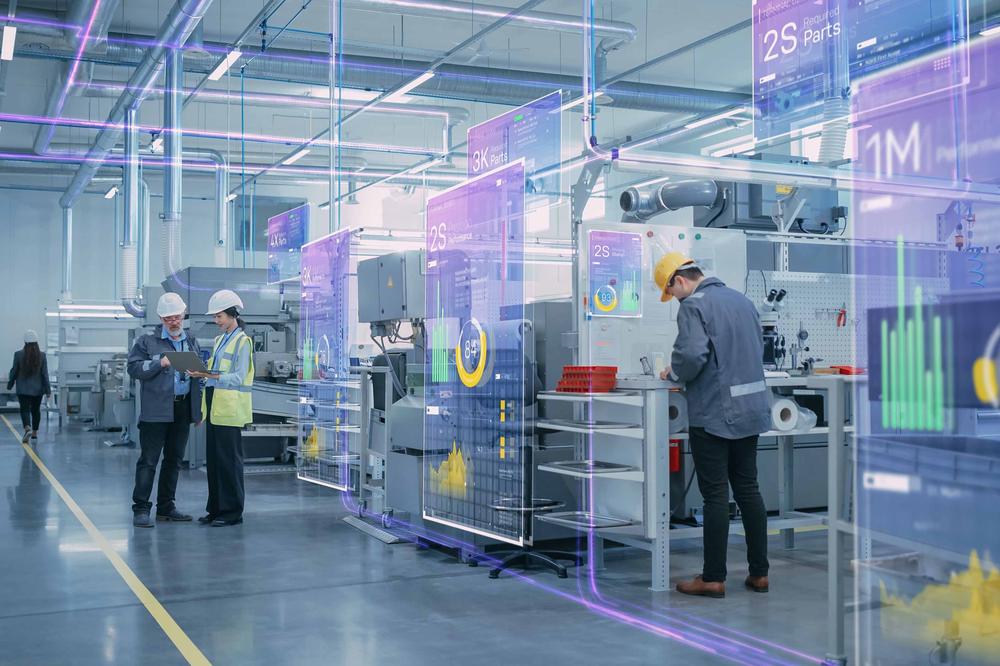
The B2B platform for the best purchasing descision. Identify and compare relevant B2B manufacturers, suppliers and retailers
Close
Filter
Result configuration
Continents
Select continent
Locations
Result types
Company type
Select company type
Industries
Select industry
Company status
Select company status preset
Number of employees
Min.
Max.
Founding year
Autoflight
Huangpu District, China
D
251-500 Employees
2017
Key takeaway
AutoFlight is a pioneering high-tech company focused on developing and manufacturing electric vertical takeoff and landing (eVTOL) aircraft, aimed at enhancing urban air mobility and logistics systems. Their commitment to next-gen aerial vehicles positions them as key players in the autonomous aircraft sector.
Reference
Core business
AutoFlight is a high-tech pioneer for eVTOL aircraft | AutoFlight
AutoFlight is a global high-tech startup dedicated to developing and manufacturing electric aerial vehicles to provide safe and reliable logistics systems and urban air mobility solutions for people.
XWING
San Francisco, United States
B
11-50 Employees
2016
Key takeaway
Xwing is a leading supplier of modular autonomy technology for aviation, offering an autonomous flight system that enhances safety and efficiency for both piloted and unmanned aircraft. Their platform-agnostic technology enables fully autonomous operations, reducing costs and improving aircraft utilization through applications like cargo delivery and aerial firefighting.
Reference
Core business
Xwing - Company
Founded to make regional air mobility smarter, safer, and more accessible for everyone.
Airobotics
Drom HaSharon Regional Council, Israel
B
101-250 Employees
2014
Key takeaway
Airobotics is dedicated to developing reliable automated unmanned systems, including autonomous drones, which serve as critical aerial infrastructure for various applications such as data capturing, delivery, and interception. Their expertise in aerospace design and commitment to regulatory compliance positions them as a leader in the global drone industry.
Reference
Core business
Airobotics - Trusted Autonomous Drones
An Israeli manufacturer and operator of UAV systems deployed as aerial infrastructure for government and commercial entities.
Looking for more accurate results?
Find the right companies for free by entering your custom query!
25M+ companies
250M+ products
Free to use
Aviant
Trondheim, Norway
A
11-50 Employees
2020
Key takeaway
Aviant AS specializes in autonomous logistics, offering full-stack drone services that enable on-demand transport of cargo. Notably, they have achieved significant milestones, including the longest autonomous drone flight over land in Norway, demonstrating their expertise in the field.
Reference
Core business
Aviant - Enabling autonomous logistics
Delivering full-stack drone services that enables autonomous and on-demand transport of cargo.
Near Earth Autonomy
Pittsburgh, United States
B
51-100 Employees
2012
Key takeaway
The company specializes in aerial autonomy systems, having been founded by robotics pioneers from Carnegie Mellon University. Their expertise ensures efficient and reliable solutions for uncrewed aircraft, enhancing their ability to perceive and avoid environmental hazards, making them a trusted partner for military and commercial applications in the growing autonomy market.
Reference
Core business
HOME | Near Earth Autonomy
Jennings Aeronautics
United States
B
51-100 Employees
-
Key takeaway
Edge Autonomy specializes in innovative autonomous systems, including unmanned aircraft solutions that are essential for various missions. Their commitment to cutting-edge technology and tailored solutions positions them as a leader in the field of autonomous aircraft.
Reference
Product
Unmanned Aircraft & Airframes - Edge Autonomy
Autonomous solutions are the core of who we are. Learn more about our UAS solutions complete, partial, and / or VTOL options to help your missions succeed.
American Robotics
Waltham, United States
B
11-50 Employees
2016
Key takeaway
The Optimus-1EX Uncrewed Aircraft, developed by Airobotics, is a pioneering autonomous drone designed for security and data capture, having received Type Certification from the FAA. With features like AI-powered autonomy, self-charging, and pilotless operation, it represents a significant advancement in autonomous aircraft technology.
Reference
Core business
American Robotics | Fully-Automated Drones
American Robotics is a commercial developer of the first FAA-approved fully-automated drone systems, providing ultra high resolution aerial data to enterprise customers.

Autonomous Robotics Ltd
United Kingdom
A
11-50 Employees
2002
Key takeaway
Autonomous Robotics is developing an innovative autonomous underwater vehicle solution called Flying Nodes, which can operate in swarms for efficient data assessment at great depths. This technology promises to significantly lower costs and enhance data quality in sectors such as environmental monitoring, offshore energy, and defense.
Reference
Core business
Autonomous Robotics | Autonomous underwater vehicle solution
D Aerospace
Sofia, Bulgaria
B
1-10 Employees
-
Key takeaway
D Aerospace specializes in the design and manufacturing of industrial-grade drones, offering advanced multirotor platforms like Azriel, which provides enhanced operational capabilities. Their drones feature open-source Pixhawk flight controllers, allowing for extensive customization to meet specific operational needs.
Reference
Core business
Home - D Aerospace
Salvatore A reliable and compact drone that gives you the power to go further and reach higher without worrying about unpredictable weather conditions.40 Minutes Flight TimePayload Up To 10 KgFlight Range 20 Km Azriel Azriel is a one-of-a-kind multirotor platform allowing more advanced and diverse operational capabilities compared to Salvatore. With the onboard power system,
Skyway
San Rafael, United States
B
1-10 Employees
2021
Key takeaway
Skyway is at the forefront of developing a secure automated airspace authorization cloud service, which is essential for the advancement of autonomous aircraft operations. Their focus on precision drone traffic management and advanced AI enhances mission planning and routing for BVLOS (Beyond Visual Line of Sight) operations.
Reference
Core business
Drone Traffic Management – Skyway
Technologies which have been searched by others and may be interesting for you:
Autonomous aircraft are advanced flying vehicles designed to operate without direct human intervention. Utilizing cutting-edge technologies such as artificial intelligence, sensors, and advanced navigation systems, these aircraft can perform complex tasks, including takeoff, flight, and landing autonomously. These systems collect and analyze data in real-time, allowing for safe and efficient operation in various environments. Autonomous aircraft are increasingly being used in applications such as cargo delivery, agricultural monitoring, and surveillance, showcasing their versatility and potential to transform multiple industries.
Autonomous aircraft utilize a combination of advanced technologies to navigate and operate without human intervention. They rely on sophisticated algorithms, sensors, and artificial intelligence to process data from their environment. These aircraft use GPS for positioning, LIDAR and radar for obstacle detection, and computer vision systems to interpret visual data. By integrating these technologies, they can make real-time decisions related to flight paths, altitude adjustments, and collision avoidance. The operation of autonomous aircraft is governed by pre-programmed flight plans that are adaptable based on changing conditions. They continuously communicate with ground control and other aircraft to ensure safe operations. This capability allows them to optimize routes, conserve fuel, and enhance efficiency, making them suitable for various applications, from cargo delivery to surveillance.
1. Increased Efficiency
Autonomous aircraft can optimize flight paths and reduce fuel consumption, leading to significant cost savings. This increased efficiency allows for quicker delivery times and improved logistical operations.
2. Enhanced Safety
With advanced sensors and real-time data processing, autonomous aircraft minimize the risk of human error. This technological advantage enhances overall safety during operations, making air travel more secure.
3. Accessibility to Remote Areas
These aircraft can reach locations that are difficult for traditional aircraft to access, providing vital services such as medical supplies and emergency assistance in hard-to-reach regions.
4. Operational Flexibility
Autonomous aircraft can operate in various environments and conditions, allowing for versatile applications across industries such as agriculture, surveillance, and cargo transport.
The challenges faced by autonomous aircraft in terms of regulation primarily revolve around safety, integration into existing airspace, and compliance with aviation standards. Regulators must ensure that these aircraft can operate safely alongside manned flights. This integration requires robust communication and navigation systems to avoid collisions and manage air traffic effectively. Additionally, establishing a clear regulatory framework that addresses liability, data privacy, and cybersecurity issues is vital. As technology evolves, regulators must keep pace with innovations while ensuring public trust in autonomous systems. The absence of established guidelines often leads to uncertainty for manufacturers and operators, hindering the growth of this emerging sector.
Safety in autonomous aircraft is ensured through a combination of advanced technology, rigorous testing, and regulatory compliance. These aircraft are equipped with sophisticated sensors and systems that allow them to detect obstacles, navigate, and make real-time decisions without human intervention. Automated safety protocols are built into their systems to respond to potential failures or emergencies, ensuring continuous operation under various conditions. Furthermore, manufacturers adhere to strict industry standards and regulations set by aviation authorities, conducting extensive simulations and flight tests to validate the safety features of their aircraft. Regular updates and maintenance practices also play a crucial role in mitigating risks and enhancing overall safety, making autonomous aircraft a reliable option for various applications in aviation.
Some interesting numbers and facts about your company results for Autonomous Aircraft
| Country with most fitting companies | United States |
| Amount of fitting manufacturers | 9154 |
| Amount of suitable service providers | 9735 |
| Average amount of employees | 11-50 |
| Oldest suiting company | 2002 |
| Youngest suiting company | 2021 |
20%
40%
60%
80%
Some interesting questions that has been asked about the results you have just received for Autonomous Aircraft
What are related technologies to Autonomous Aircraft?
Based on our calculations related technologies to Autonomous Aircraft are Big Data, E-Health, Retail Tech, Artificial Intelligence & Machine Learning, E-Commerce
Who are Start-Ups in the field of Autonomous Aircraft?
Start-Ups who are working in Autonomous Aircraft are Skyway
Which industries are mostly working on Autonomous Aircraft?
The most represented industries which are working in Autonomous Aircraft are Aviation and Aerospace, IT, Software and Services, Other, Logistics, Supply Chain and Transportation, Automotive
How does ensun find these Autonomous Aircraft Companies?
ensun uses an advanced search and ranking system capable of sifting through millions of companies and hundreds of millions of products and services to identify suitable matches. This is achieved by leveraging cutting-edge technologies, including Artificial Intelligence.